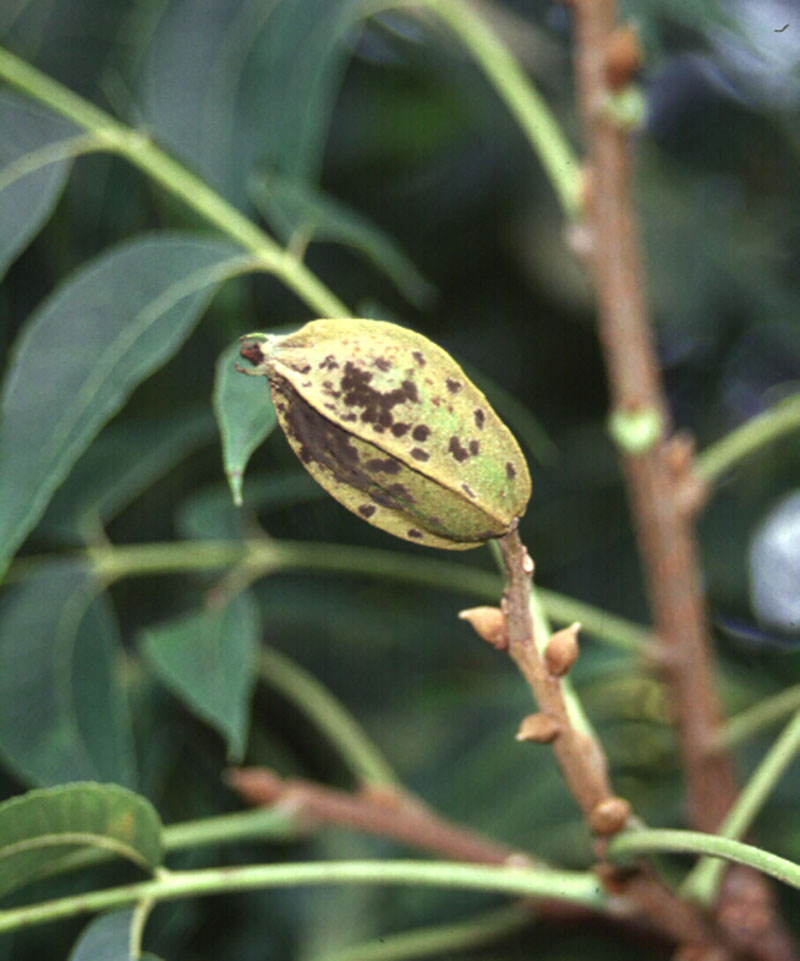By Clint Thompson
The wettest summer in 20 years has made scab disease control essential for pecan producers in the Southeast.

Lenny Wells, University of Georgia Extension pecan specialist, believes the crop would be impacted more if not for the improved fungicides available to growers.

“This is one of the wettest summers I can recall. Probably the worst years I can remember for having excessive rainfall and heavy, heavy scab pressure, they always seem to fall on a year ending in a 3; 2003 was probably the worst year I’ve ever seen; 2013 was bad, but we had a little better chemistry, so it wasn’t quite as bad as 2003,” Wells said.
“This year, I would say, and I haven’t looked at the numbers, but it just feels like the frequency of the rainfall and the pressure we’ve had, it just seems like it may be even more than it was in 2003. But I think we’re in much better shape regarding scab, because we have a lot of tools in the arsenal to be able to manage scab.”
Scab is a fungal disease that infects the leaves or nuts of pecan trees. If it affects the nut early enough, scab can cause the pecan to blacken and fall from the tree. It thrives on trees that have received moisture which has been the case this summer. Some growers could apply between 10 and 12 fungicide sprays during an average year to fight scab. The more it rains during the summer, the more applications a grower is likely to make.
Fortunately, growers have improved fungicide sprays that they can apply, and it has made a huge difference in the management process.
“Probably two of the most important tools that have helped us the most in those 20 years (since 2003), the use of phosphite fungicides and also Miravis Top product, which is a Group 3 and Group 7 fungicide. Those have been game changers in scab control,” Wells said. “I think if we did not have those two options available to us right now, we’d be looking at a lot worse scab than what we have out there.”









